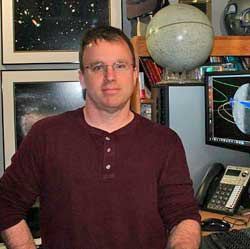NASA’s Lunar Atmosphere and Dust Environment Explorer was able to get from the launching pad, Sept. 6, to its lunar commissioning orbit five weeks later, Oct. 13, thanks in large part to Friday Harbor’s Mike Loucks.
Owner of Friday Harbor-based Space Exploration Engineering Corporation, Loucks designed and helped implement the trajectory used to send the Environment Explorer into orbit. He designed the trans-lunar and lunar orbit capture portion of LADEE’s trajectory.
He was on-site at the NASA/Ames control center from launch on Sept 6, through the final lunar orbit insertion maneuver on Oct. 13, and served as trajectory lead and flight dynamics team member during that time.
Loucks also designed the trajectories for the Interstellar Boundary Explorer Mission, launched in 2008, and the Orbview-II spacecraft, which launched in 1997.
The Space Exploration Engineering Corporation was founded in 1995 in Boulder, Colo. Loucks moved the company and his family to Friday Harbor in 2001.
The progress of the LADEE spacecraft along its trajectory was chronicled by Loucks and fellow “astro-gator” John Carrico during the trans-lunar portion of the mission on the “Astrogator’s Guild” blog (www.astrogatorsguild.com). The two were featured in an Oct. 8 article in the Christian Science Monitor, “Moon mission LADEE arrives after an ‘amazingly precise’ looping flight,” written by Liz Fuller-Wright and appearing in the online version of the publication.
LADEE (pronounced like “laddie”) is a robotic mission designed to orbit the moon and to gather detailed information about lunar atmosphere, conditions near the surface and environmental influences on lunar dust. It also carries an innovative lunar laser communication demonstration instrument, which is designed to transmit data at a rate of 622 megabits per second, about five times the current state-of-the-art from lunar distances.
LADEE is managed by NASA’s Ames Research Center in Mountain View, Calif.
After the commissioning phase of the mission, which lasts for one month, LADEE will be lowered to its science orbit with an average altitude below 50 kilometer (31 miles). LADEE will spend three months at this lower altitude, and will then be directed to lunar impact after it runs out of fuel.



